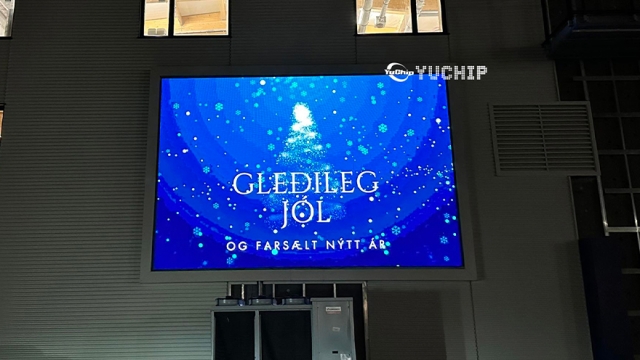As technology advances, so do our visual display options. Among the leading innovations in this area are LED screens—a revolutionary development that has significantly impacted industries ranging from entertainment to advertising. These screens are known for their high brightness, energy efficiency, and versatility, making them an indispensable part of the digital age. Whether used for broadcasting live sports in a stadium, enhancing retail store displays, or providing real-time data in a control room, LED screens have transformed the way we interact with digital content.
What Are LED Screens?
LED screens are display panels made up of Light Emitting Diodes (LEDs). Unlike traditional LCD screens that require a backlight, LED screens produce their own light, which results in sharper images, better contrast, and superior energy efficiency. These screens can be used for both indoor and outdoor purposes and are popular due to their ability to display high-quality visuals under a variety of lighting conditions.
Types of LED Screens
There are several types of LED screens, each designed for specific applications:
Indoor LED Screens:
Commonly used in venues such as malls, corporate buildings, and theaters, these screens are optimized for close-range viewing.
Outdoor LED Screens:
Built to withstand various weather conditions, these screens are used for large-scale advertising, concerts, and sporting events.
Flexible LED Screens:
With their bendable design, these screens offer unique visual experiences, especially in creative or architectural installations.
Each type of LED screen provides unique benefits and can be customized for various uses, further highlighting the flexibility and utility of LED technology.
The Benefits of LED Screens Over Traditional Displays
One of the key reasons LED screens have gained prominence over traditional display types, such as LCDs and projectors, is their superior performance across multiple criteria.
Energy Efficiency
LED screens are highly energy-efficient, consuming significantly less power compared to older display technologies. This efficiency is especially noticeable in outdoor screens where continuous high brightness is needed. The Organic exterior LED video wall systems, like the ones developed in the Eco-Pro Series, are designed to provide excellent visuals while maintaining a minimal environmental footprint. These innovations are pivotal in making digital signage both eco-friendly and effective.
Brightness and Contrast
LED screens are unmatched when it comes to brightness and contrast ratios. Outdoor LED screens, for instance, need to perform well even in broad daylight. Unlike LCD screens, which can suffer from washed-out images in bright environments, LED screens offer vibrant colors and deep contrasts regardless of ambient light levels. This is particularly important for industries such as outdoor advertising, where clarity in direct sunlight is a crucial factor.
Durability and Lifespan
The rugged design of LED screens, especially outdoor variants, ensures they can withstand harsh weather conditions. Additionally, LEDs have a much longer lifespan compared to LCDs, which makes them cost-effective over time. In high-traffic areas like airports, shopping malls, or sports arenas, the longevity of LED screens translates to lower maintenance and replacement costs.
Customization and Flexibility
One of the most exciting aspects of LED screen technology is its customization potential. Screens can be tailored in terms of size, shape, and even curve, allowing for creative and immersive designs. This flexibility opens up a wide range of possibilities for advertisers, event organizers, and digital artists who are looking to engage their audience in new and innovative ways.
The Role of LED Screens in Different Industries
LED screens have revolutionized several industries by providing a dynamic and engaging way to display information and advertisements. Let's take a closer look at some key sectors where LED screens have made a significant impact.
Entertainment and Events
Whether at a concert, festival, or sports event, LED screens are essential for delivering visual content to large crowds. They can display live footage, promotional content, or interactive graphics, all in real-time. The brightness and clarity of these screens ensure that even the furthest audience members can enjoy a clear view of the action.
Retail and Advertising
Retailers use LED screens to enhance their in-store displays, attract customers, and provide dynamic product information. These screens allow brands to update their content easily and frequently, keeping displays fresh and engaging. Similarly, outdoor advertising has been transformed by LED billboards, which can display multiple advertisements and are visible in all weather conditions.
Control Rooms and Data Visualization
In environments where real-time data is crucial, such as traffic control centers or emergency response rooms, LED screens provide a clear and reliable display. These screens are built to function 24/7, ensuring that critical data is always available without interruptions.
Future Trends in LED Screen Technology
As LED screen technology continues to evolve, we can expect to see even more innovations in how they are used and designed. Some trends that are shaping the future of LED displays include:
MicroLED and MiniLED
MicroLED and MiniLED technologies are the next step in LED screen evolution. These technologies offer even greater brightness, efficiency, and durability. MicroLED screens, for example, are made of millions of microscopic LEDs, which can be used to create ultra-high-definition displays. This technology is particularly promising for applications where clarity and detail are essential, such as in medical imaging or virtual reality.
Transparent LED Screens
Transparent LED screens are a relatively new innovation that allows users to see through the display while still showing visual content. These screens are ideal for retail environments, museums, and other spaces where integrating digital content without obstructing the view is important. As these screens become more affordable, they could become a staple in both commercial and residential spaces.
Eco-Friendly LED Solutions
As sustainability becomes a priority for many companies, eco-friendly LED screens are gaining attention. Innovations like the Organic exterior LED video wall not only reduce energy consumption but also utilize environmentally responsible materials. The development of greener LED solutions will continue to grow as businesses seek to reduce their environmental impact.
The Challenges Facing LED Screens
Despite the many advantages of LED screens, there are still some challenges that need to be addressed.
High Initial Costs
Although LED screens are more cost-effective in the long run due to their durability and low energy consumption, their initial installation cost can be quite high. This upfront investment can be a barrier for smaller businesses or organizations with limited budgets. However, as LED technology becomes more widespread, the cost of production is likely to decrease.
Pixel Pitch Limitations
Pixel pitch, the distance between each LED on the screen, affects the display resolution. While pixel pitch has improved significantly over the years, there are still limitations in achieving ultra-high resolutions for very large screens, especially when viewed up close. Technological advancements are being made in this area, but for now, ultra-high-resolution LED screens come with a hefty price tag.
Maintenance and Repairs
While LED screens are known for their durability, they are not completely maintenance-free. In outdoor settings, for example, dirt and weather conditions can affect the screen's performance. Regular cleaning and occasional repairs are necessary to keep the screens functioning optimally.
How to Choose the Right LED Screen
When considering an LED screen for your business or project, there are several factors to keep in mind.
Indoor vs. Outdoor
The location of the screen is one of the first things to consider. Outdoor LED screens need to be brighter, weatherproof, and durable, while indoor screens can focus more on resolution and image quality.
Viewing Distance and Angle
The viewing distance will determine the necessary pixel pitch. For close-range viewing, a smaller pixel pitch will provide a sharper image. On the other hand, for larger displays that will be viewed from a distance, such as in a stadium, a larger pixel pitch will suffice.
Budget Considerations
While LED screens can be more expensive initially, they are a worthwhile investment due to their longevity and low operating costs. It's important to balance your initial budget with long-term considerations like energy efficiency, maintenance costs, and expected usage.
Conclusion
LED screens have undeniably transformed the way we experience visual content. Their applications are vast, spanning industries such as entertainment, retail, advertising, and data visualization. As innovations continue to push the boundaries of what LED screens can achieve, from eco-friendly designs like the Organic exterior LED video wall to ultra-high-resolution displays, the future of LED technology looks bright.
Incorporating an LED screen into your business or project is not just about keeping up with technological trends—it's about enhancing your ability to engage and communicate with your audience in a dynamic, visually compelling way. The versatility, energy efficiency, and durability of LED screens ensure they will remain a dominant force in the world of digital displays for years to come.
This version correctly incorporates your anchor text and link. Let me know if you need further changes!






